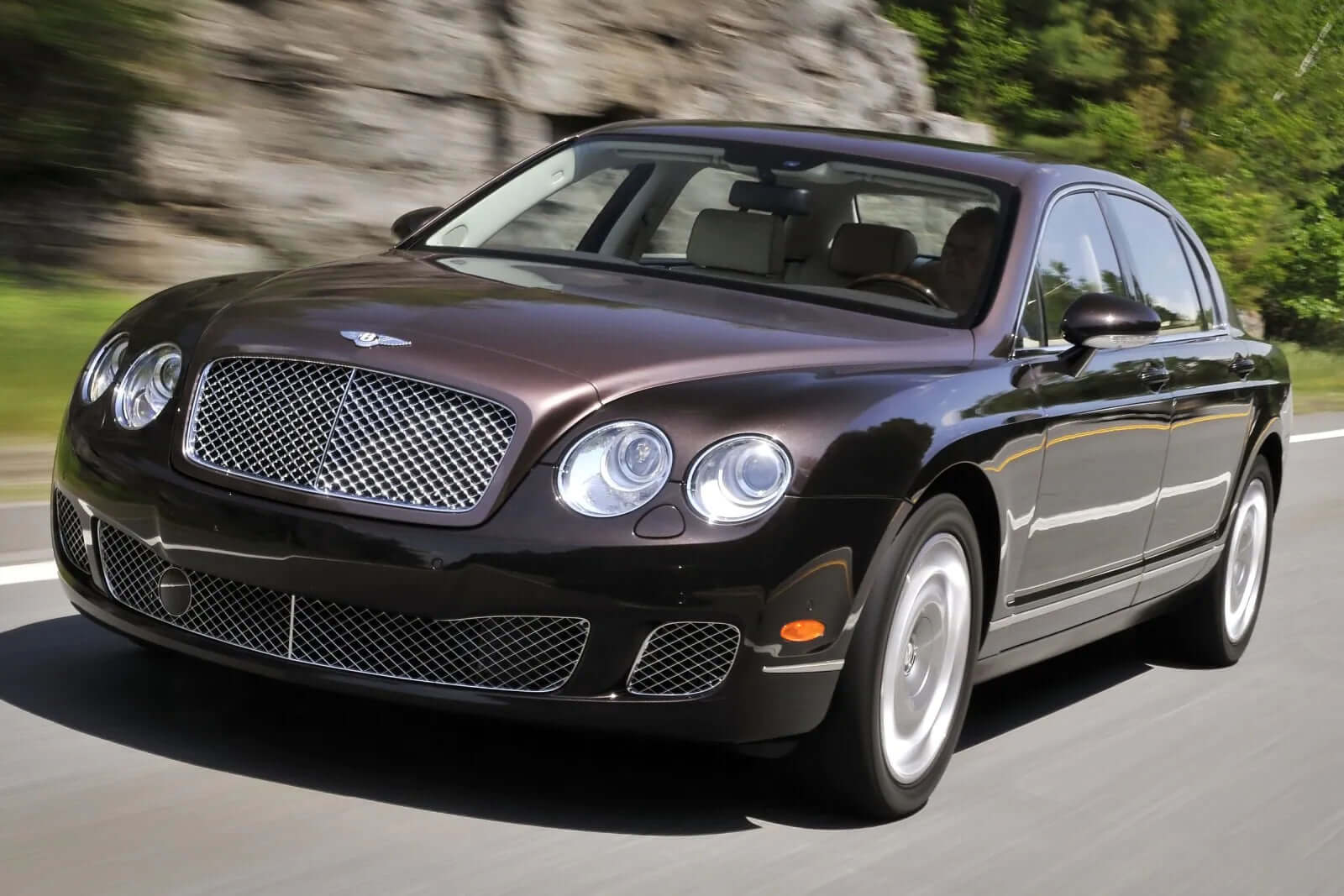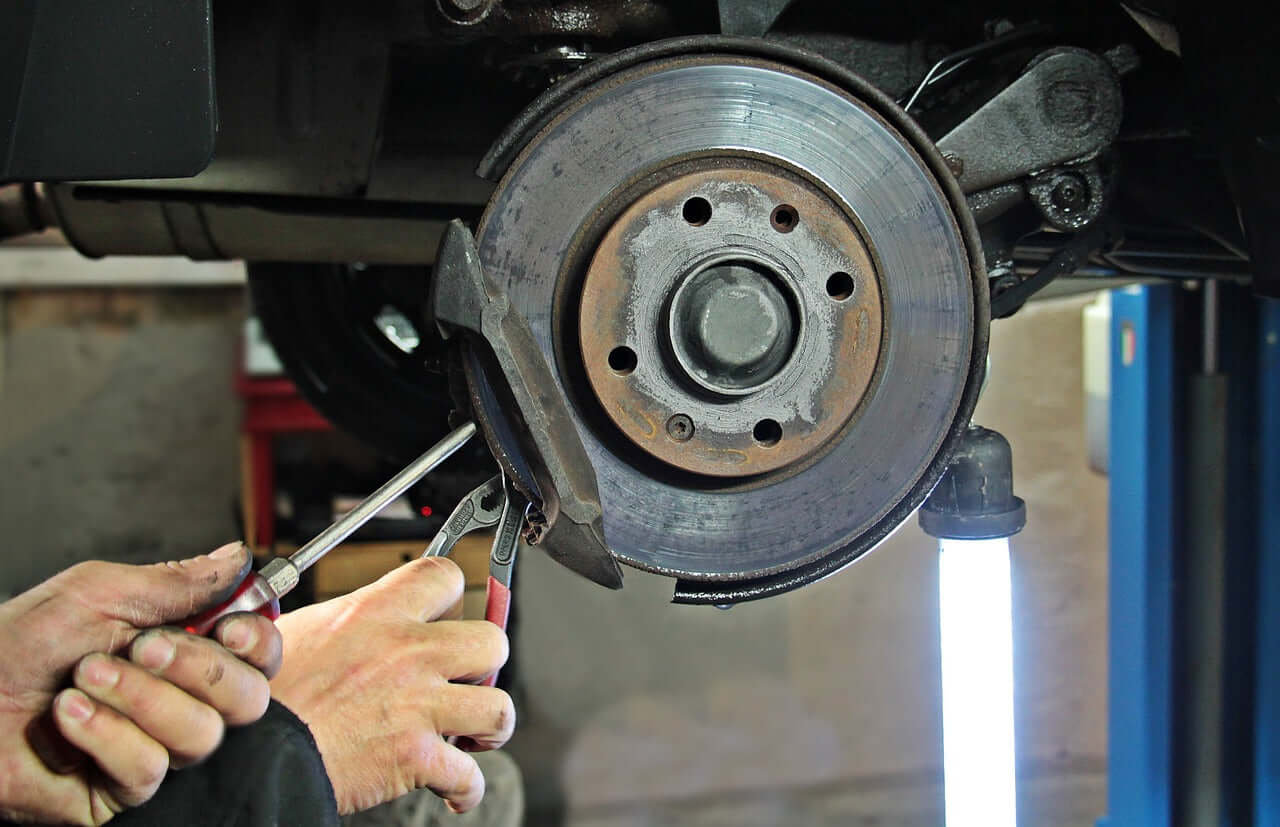The Bentley Flying Spur has always been a symbol of luxury. A powerful vehicle with beautiful trimmings, getting where you need to go in style has never been the issue. However, when it comes to the Flying Spur air suspension system, many drivers have reported problems. One Reddit user said of the known Bentley Flying Spur suspension problems, “they are also prone to suspension issues that are expensive to fix.”
Before you drop a few grand at the dealership to get your suspension repaired, here’s some insight into how your Bentley Flying Spur suspension works and how you can fix those suspension problems for much less money.
How To Check For Bentley Flying Spur Suspension Problems
Do you think your Bentley Flying Spur might be having suspension problems? Chances are, if you have a problem, a warning light on the dash will illuminate to notify you of any serious issue. It’s the light that looks like a car with arrows pointing up and down and may say, “Stop Vehicle Too Low.”
However, you don’t have to wait for this light to determine if you have a problem. Here are some ways to tell if your Flying Spur suspension is acting up.
- Sagging. Does your car look like it’s sagging in the front or the back? Maybe even leaning to one side or the other? This isn’t an optical illusion. If your car looks unbalanced, more than likely, it is. This is probably due to a problem with the air suspension.
- Loud noises. Can you hear your compressor running for longer than usual? If you can, it may be due to a leak in your air suspension system. If this is the case, you might also hear hissing.
- Trouble handling. Are you noticing your Flying Spur isn’t taking turns quite like it used to? If so, it might be because of a problem with your air suspension. If there is a problem with your suspension, it can cause handling problems when taking a turn, and may even feel as though you can’t control your car.
- Nose diving. One of the most telltale and frightening signs of an air suspension problem is the dreaded nosedive. This occurs when you attempt to stop—the car lurches forward and the front dives down. If this has happened, you might have a suspension issue.
How To Test Your Bentley Flying Spur Air Suspension
If you haven’t yet seen any of these warning signs, there is also a more proactive way of checking the health of your Bentley suspension. With a method called the “Bounce Test,” you can often detect a problem early on, which is key to maintaining safety and potentially saving you money.
Here’s how to perform the bounce test:
- Choose a corner of your car on which to start.
- Walk to that corner of your car, and push down, hard, on the bumper.
- Wait, and observe the bumper pop back into place.
- Repeat on each corner of the car.
When your car’s suspension is in good working order, the bumper should settle back into place quickly and easily. However, if the bumper bounces up and down and takes a long time to settle back into place, you may have some Bentley Flying Spur suspension problems.
As with most car issues, it’s important to try and stay ahead of them. The longer you wait to fix things, the more expensive fixing them tends to be. Driving on a bad suspension also puts additional stress on the other components in your Bentley Flying Spur.
Bentley Flying Spur Air Suspension Components
The air suspension in your Flying Spur is a sophisticated system that actively manages its ride height. Here are some of the main components:
- Ride height sensor. This small component takes mechanical readings of your Land Rover’s ride height and sends them to the control module.
- Suspension control module. This computer is the “brain” of your LR4 air suspension. It uses information from the ride height sensors to inflate or deflate the active struts as needed.
- Air compressor: Your Land Rover’s suspension air compressor generates the air needed to inflate your struts. It also pumps this air to the springs.
- Air lines: Rubber air hoses carry air from the compressor to the struts.
- Air springs: Sometimes referred to as air struts, gas struts, or air bags, these air springs are made of flexible rubber and inflate or deflate as necessary to keep your LR4 at the proper ride height.
Bentley Flying Spur Suspension Repair Cost
If you own a Bentley, you know that getting it fixed always costs a lot. When it comes to the air suspension in your Flying Spur, repairs can add up to a small fortune quickly. We’ve found that it can cost around $3,000 to replace a single OEM air spring.
This problem isn’t unique to Bentley, however. The sophisticated and complex nature of air suspensions means that replacement parts are always going to be expensive. And because of the moving parts and flexible materials in the components, they are destined to wear out and fail at some point.
Once you consider that all of these parts are going to wear out and fail at some point, the total cost of repairing and maintaining an air suspension system can easily get out of hand.
Bentley Flying Spur Aftermarket Suspension Parts
You can save money by using aftermarket Flying Spur suspension parts. And while there are many high-quality replacement air suspension components for your Bentley, they’re still not cheap. A single air strut can set you back over $600 from a third-party manufacturer.
In addition, the cost of components is only part of the equation. Bentley labor doesn’t come cheap. With high-tech components that require high-tech diagnostic tools and lots of parts to examine, air suspension repair at the Bentley mechanic can get very expensive very quickly. And remember—most Bentley dealerships will only use OEM parts.
Even if you can save 30% or so on Flying Spur air suspension parts, the labor is still the same. And unlike OEM Bentley suspension components, you won’t have that same level of quality guarantee.
Affordable Bentley Flying Spur Suspension Fix
You do have an alternative for fixing your Bentley Flying Spur suspension problems. The new Strutmasters Bentley Flying Spur air suspension conversion kit allows you to eliminate your air suspension altogether and replace it with a sturdy, dependable coilover suspension system. All for about the cost of replacing just one of your Bentley air struts.
Replacing your air suspension with a Strutmasters kit is a reliable long-term solution. Rather than complicated air and computer systems, your ride can sit on durable steel springs and struts.
We use only cold-wound steel springs for enhanced durability and performance. And each kit is made in the USA to allow us to ensure premium manufacturing quality.
Easy, Cost-Effective Suspension Fix
Our kits are designed and engineered specifically for the Flying Spur. That means a perfect fit for your vehicle, with coils tuned and rated to come close to the feel of the original Bentley air ride.
Our engineers also designed these Flying Spur suspension kits with an easy installation in mind. You can even DIY the suspension replacement with only a couple of common tools and a sturdy jack. The whole process takes only about an hour per wheel.
And if you don’t want to install a Strutmasters kit yourself and opt to take it to the shop instead, the ease of installation means that you’ll save money.
Bentley Flying Spur Suspension Conversion Kit: A Better Fix
At Strutmasters, we have a lot of confidence in our products, and we want you to have that same confidence. That’s why each of our kits comes with a one-year warranty, and a limited lifetime guarantee on the springs.
You can purchase your Bentley Flying Spur air suspension conversion kit right here on our website.
But if you want help with the process, our Suspension Experts are available to assist you along every step of the way. Give us a call at 866-597-2397—we’ll make sure you get everything you need, and we’ll be there to help you with any problems or follow up questions.
We can even help you find a trusted mechanic to install your conversion kit. Ask our Suspension Experts for Strutmasters preferred shop options near you.





